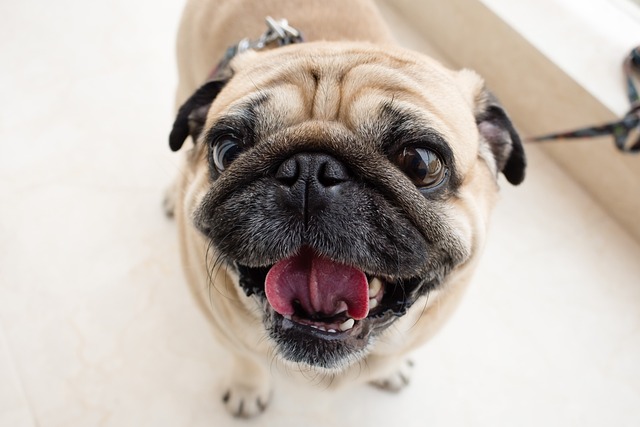
How do i train my dog to be obedient?
Watching your dog dart across the park ignoring your calls isn’t just frustrating—it can put them at risk near busy streets or public spaces.
Pugs, with their chubby bodies and innocent eyes, bring a lot of joy to our lives. However, to make them well - behaved and obedient companions, it requires the careful guidance of their owners. Next, let's explore the secrets of training pugs to be obedient together.
I. Understand the Unique "Personality" of Pugs
Pugs are small in size but very intelligent, although they can be a bit stubborn at times. They don't like to run around full of energy; instead, they prefer to lounge around lazily. Their love for food can be a powerful "weapon" in training. Moreover, they are emotionally delicate, and their owners' emotions and actions can be keenly sensed by them. Therefore, during training, we should always be gentle and patient, let them feel our love and care, and build a trusting relationship.
II. Build an Emotional Bridge
Establishing a close emotional connection is the foundation of training. As soon as a pug enters our home, we should spend more time with it, playing, stroking, and communicating with it every day. When it approaches us actively and wags its tail, it means that it has accepted us, and this trust will support the smooth progress of training.

III. Basic Command Training
(I) "Sit": The First Step in Obedience
Prepare some snacks that the pug likes. Squat down in front of it, use the snacks to attract its attention, and then slowly move the snacks upward. The pug will naturally sit down. At the moment it sits down, immediately hand over the snacks, clearly say "sit", and give enthusiastic praise. Train several times a day, with each training session lasting 10 - 15 minutes. Gradually, it will understand the meaning of the command.
(II) "Stay": Cultivating Patience and Self - control
After the pug has mastered the "sit" command, you can start training the "stay" command. Let the pug sit first, stretch out your palm facing it, and firmly and clearly give the "stay" command. Then, take a small step back and observe its reaction. If it can maintain its sitting position, go forward and give it a reward and praise after a few seconds. Gradually increase the distance and waiting time during training. If it doesn't follow the command, don't punish it. Be patient and start the training again.
(III) "Come": A Key Command for Safety
Choose a quiet and undisturbed place, let the pug play at a short distance, call its name and give the "come" command, while waving to it at the same time. When it runs over after hearing the command, give it a warm welcome and generous rewards. If it doesn't respond, you can use a more cheerful voice or snacks to attract it.
IV. Developing Daily Living Habits
(I) Fixed - point Defecation: Say Goodbye to "Messiness"
Pugs have the need to defecate shortly after eating, waking up, and playing. At this time, take it to the designated defecation area, such as a corner covered with newspapers or puppy pads. If it defecates in the designated place, praise and reward it in a timely manner. If it defecates in other places, gently tell it that it's wrong, clean up the feces, and remove the odor to avoid it making the same mistake again. With consistent training, it will develop good habits.
(II) Healthy Eating: Prevent Picky Eating and Overeating
During training, feed it regularly and in fixed amounts, with each feeding time lasting 15 - 20 minutes. If it doesn't finish the food within the specified time, take away the food and only provide it again at the next feeding time. This way, it will understand that it can only be full by eating on time. At the same time, avoid giving it human food to prevent affecting its health.
V. Social Training: Cultivating a "Socialite"
When the pug is 3 - 4 months old, you can start taking it for social activities. Choose quiet and friendly places for it to interact with different people and gentle dogs. Pay close attention to its reactions during social interactions. If it shows fear or aggression, soothe it in time and guide it to interact correctly. When it behaves friendly, give it praise and rewards. Through social training, it will become more confident and friendly.
Training a pug requires patience and scientific methods. When we see a pug transform from a naughty little guy into a well - behaved companion, all our efforts will turn into beautiful memories. Let's create a healthy growth environment for pugs with love.

Watching your dog dart across the park ignoring your calls isn’t just frustrating—it can put them at risk near busy streets or public spaces.

New puppy owners often find themselves rushing to clean up accidents before they set in, and that’s where puppy pad training becomes a game-changer.

If you've noticed your dog's waistline disappearing and your veterinarian has mentioned those few extra pounds, your first instinct might be to simply reduce the amount of food in their bowl.

Training a dog to use a designated spot indoors isn’t as daunting as many new owners fear, but it does take consistency and an understanding of your pet’s needs.

That moment of dread on a walk is all too familiar for many new dog owners. You see another dog approaching down the sidewalk of your neighborhood

If the sight of another dog on your neighborhood walk makes your heart sink as your own dog erupts into a frenzy of barking and lunging, you're not alone.